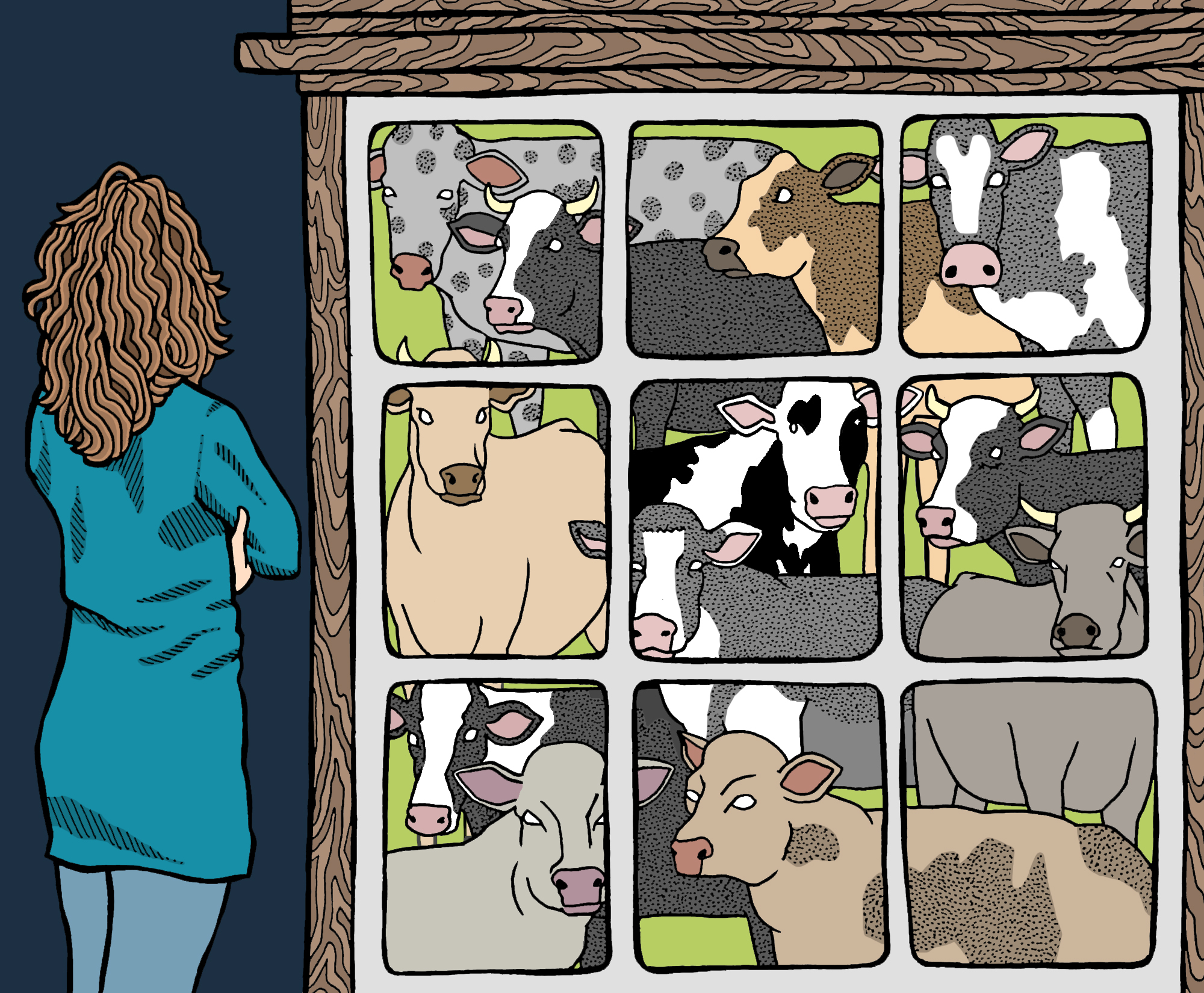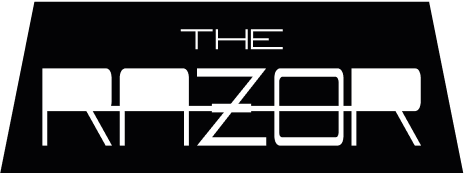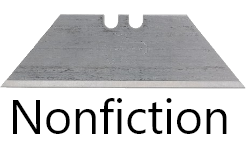Some Facts About Cows

art by Nora Kelly
It was a milking shed in the 1920s. People also ask.
Cows have a visual field of 330°, almost an all-around view. They can see the colors yellow, green, and blue whereas…
When we purchased the empty barn the color of hay, downhill from the road in the grassy field, the milking shed was the only finished space: an apartment with creamy walls and thick, brown trim outlining the cathedral ceiling, around a bank of windows, and on the baseboards. It had a galley kitchen (deep blue tiles), compact bathroom, and a set of narrow spiral stairs to a loft. We lived in that studio space for eighteen months, drunk on home ownership, cementing a foundation, ready to construct the future.
A sturdy winterized door separated us from the rest of the barn. A blank slate. A cavernous shell.
If the cows were in their pasture, munching white clover around The Big Rock, they would see the birches coaxed into a circle as saplings—grown up now—waving their delicate branches in the center of the meadow.
Cows can cover 13 kilometers per day.
What is 13 kilometers to the nearest mile? 8.078.
The Big Rock serves as a junction, offering a choice of routes. They could amble past the former site of the jungle gym, the one with a skinny plank that led to a red captain’s wheel to spin and spin in the enclosed perch. The harsh winters eroded the protective rubbery layer on the metal bars. No one slid, pumped, or climbed. Disassembled over several days, the parts were hauled away to clear an acre for massive solar panels.
Cows are oblivious to the power captured amid destruction.
In the morning, my husband and I readied for separate commutes, folding up our futon so we had room to set up the card table for breakfast. We’d used the loft to craft beer, and I enjoyed slapping fabric paint on every dish towel, curtain, and t-shirt.
Our home took shape beyond that heavy door: plywood floors, rough-cut pine beams to frame out the central dining-kitchen area, and sheetrocked walls. We welcomed our first baby. The milking shed became a bedroom for all of us.
Cows don’t need much sleep.
When our second child joined us weeks early, we scrambled to finish the upper floors with a family-sized bathroom and new bedrooms. The milking shed became our library-guest area, but the loft remained a place of inspiration.
Cows are moving constantly.
My children wanted to join me in the loft. Crayon volcano drawings gave way to stencils they cut from cereal boxes to trace onto notecards, which matured into 3-D construction paper snowflakes and, eventually, jewelry. Stringing buttons or molding Sculpey was in the rearview mirror as we advanced to fusing glass. I taught the boys to score, cut, and layer pendants and earrings. They programmed the kiln. They sold their original pieces at craft shows or shared their designs with friends and family, astonishing recipients with the flash of sparkle on holiday mornings or around the birthday table.
The color red is hard for cows to see.
Compared to the hearing ability of humans, the hearing ability of cows is better.
One evening, on a New England campus swollen with leaves the color of blistered tomatoes and ringed with gold against the Berkshires, my younger son, Owen, killed himself.
Not the whole story.
Cows are unfamiliar with homophones.
In that bruised first season without him, I climbed the stairs to the loft. I settled in to work. I rolled out bronze metal clay, texturized it with spirals and waves, then cut and fired a series of O-shaped pendants to accompany whatever I wear. My fingers reach and trace the familiar circular shape once, twice, or maybe fifteen times between getting dressed in the morning and unclasping the silky black cord at night.
I sold the kiln and boxed up all the broken glass to make room for new material. Two plastic bins store the slippery red flashcards Owen handwrote to learn Spanish.
One side: Alzar. The other: to raise/lift.
I purchased watercolors, more crayons. I filled a bookshelf with outdated bird guides and library sale finds for erasure poetry. Books about collage and doodling show me how to weave and sketch the scraps. I organized diaries and engagement calendars of my before and after. There’s a basket of magazines full of advice for homeowners and gardeners on how to transform anything.
Besides the ‘mooing’ cows use their body language, such as the position of the head, limbs, and tail, as well as facial expressions, in order to communicate.
I can open the door—now a proper interior, one made of pine and stained like summer—to enter the milking shed. Twisting my way up to the loft, I take a seat at a table. Roll the shoulders. Open the chest. Lengthen the spine. Select the tools. Make something.


